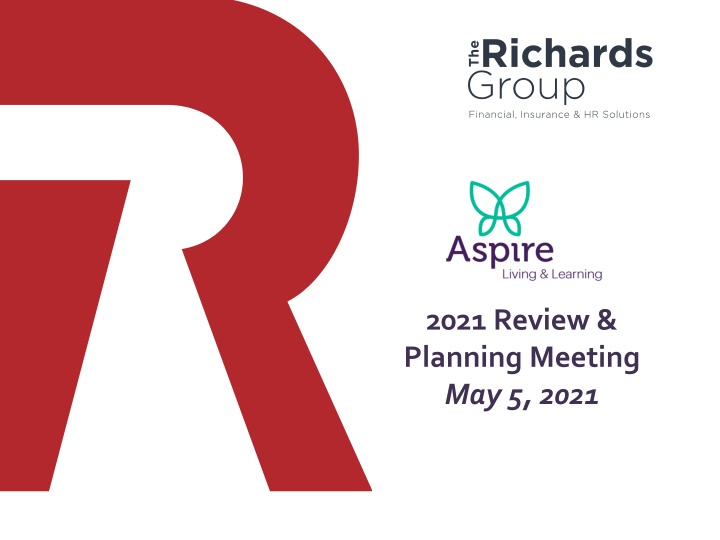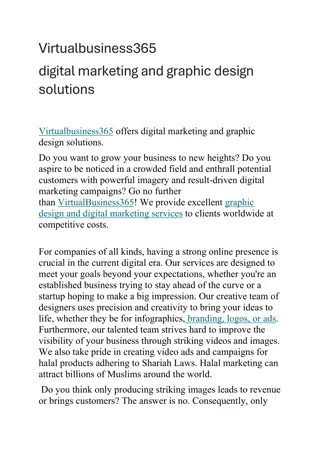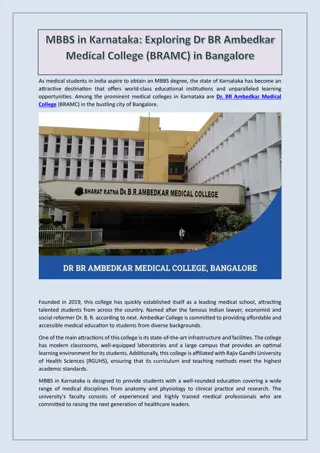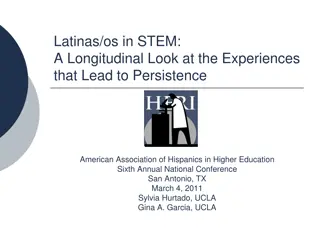
2021 Review and Planning Meeting Summary: Financial Analysis and Team Updates
Explore the outcomes of the 2021 Review and Planning Meeting held on May 5, 2021, focusing on financial analysis, net plan costs, and updates from the account management and special operations teams. Gain insights on total costs, employee contributions, medical plan costs, and more. Stay informed about the discussions on strategy, benefits, open enrollment, and demographics for effective planning and decision-making.
Download Presentation

Please find below an Image/Link to download the presentation.
The content on the website is provided AS IS for your information and personal use only. It may not be sold, licensed, or shared on other websites without obtaining consent from the author. If you encounter any issues during the download, it is possible that the publisher has removed the file from their server.
You are allowed to download the files provided on this website for personal or commercial use, subject to the condition that they are used lawfully. All files are the property of their respective owners.
The content on the website is provided AS IS for your information and personal use only. It may not be sold, licensed, or shared on other websites without obtaining consent from the author.
E N D
Presentation Transcript
2021 Review & Planning Meeting May 5, 2021
A g e n d a I. Navigate to Virtual Binder tab II. YTD Plan Report- March last data on file III. 2020 Financial Analysis IV. Open Enrollment & Demographics V. Strategy & Benefits Climate VI. Business Associate Agreement (BAA) & 2021 Advisory Agreement VII.Discussion
Your Account Management Team John Round Principal Tom Scull Vice President tscull@therichardsgrp.com P: (802) 251-3839 C: (802) 233-2071 jround@therichardsgrp.com P: (603) 357-2707 Amanda Normand Account Manager Caitlin Caulfield Sr. Account Manager ccaulfield@therichardsgrp.com P: (802) 251-3775 C: (603) 209-5859 anormand@therichardsgrp.com Jackie Brady Sr. Account Executive jbrady@therichardsgrp.com P: (802) 251-3814 C: (802) 451-9559 (802) 251-1863 Your Special Operations Team Ross Gibson Chief of Operations Leadership & Organizational Dev. Facilitator rgibson@therichardsgrp.com P: (802) 451-6445 Lindsay Simpson Organizational Wellness Lead lsimpson@therichardsgrp.com P: (802) 251-3803
F i n a n c i a l A n a l y s i s Total Aspire Cost Year to Year Cost Change Stop Loss 2020 Financials High-Cost Claimant Analysis Per Employee Per Year Cost History
F i n a n c i a l A n a l y s i s Net Plan Costs $88,716 2020 Net Costs, all plans $8,000,000 $11,639 $271,216 $10,211 $118,000 $374,061$88,716 $11,639 $374,061 $7,000,000 $271,216 $393,742 $376,543 $6,000,000 $5,000,000 $4,000,000 T $6,675,787 $6,139,195 $3,000,000 $6,675,787 $2,000,000 $1,000,000 Medical Dental Life & Disability Vision Retiree $0 2019 2020 Total $7,421,419 Net employee contributions Total: $7,147,691 Total: $7,421,419 Medical Dental Life & Disability Vision Retiree Overall increase +3.8% 2019 to 2020; increase medical, decline vision, dental
F i n a n c i a l A n a l y s i s Medical Plan Costs $8,000,000 $280,151 2020 Medical Plan Costs $7,500,000 $280,151 $278,166 $7,000,000 $1,119,946 $1,119,946 $6,500,000 $1,053,327 $6,000,000 T $5,500,000 $6,411,494 $6,411,494 $5,000,000 $5,967,598 $4,500,000 Claims Net Stop Loss Stop Loss Premium Admin Fees $4,000,000 Total $7,811,591 Pre-employee contributions (true utilization, not cost to Aspire) 2019 2020 Total $7,811,591 Total $7,299,091 Claims Net Stop Loss Stop Loss premium Admin Fees 7% increase in medical plan but both 2019 and 2020 below expected
F i n a n c i a l A n a l y s i s Medical Claims $8,000,000 $7,000,000 2020 Medical Claims $816,456 $779,561 $6,000,000 Stop Loss Reimbursed, $816,456 $5,000,000 kk $4,000,000 Unreimbursed Claims, $6,411,494 $6,411,494 $3,000,000 $5,967,598 $2,000,000 $1,000,000 Unreimbursed Claims Total Gross Claims= $7,227,950 Stop Loss Reimbursed $0 2019 2020 Total: $7,227,950 Total: $6,747,159 Unreimbursed Claims Stop Loss reimbursed
F i n a n c i a l A n a l y s i s 2020 Stop Loss Good value from stop loss premium paid in 2020 $1,300,000 $1,119,946 $1,100,000 $816,456 $900,000 kk Dividend Calculation Experience refund is 25% of net profit. Net Profit= 60% of premium minus specific claims paid: Premium 60% Reimbursements: $816,456 Refund: No 2020 stop loss dividend $700,000 $500,000 $1,119,946 $618,000 $300,000 $100,000 -$144,488 Stop Loss Premium Stop Loss Reimbursement
F i n a n c i a l A n a l y s i s Total Annual Medical Plan Costs Move to Cigna $8,000,000 $7,500,000 $7,000,000 $6,500,000 * $6,000,000 $5,500,000 $5,000,000 $4,500,000 $4,000,000 July 15 to June 16 July 16 to June 17 July 17 to Dec 17* 2018 2019 2020 Net Claims Total Costs *July 2017 to Dec. 2017 annualized 2020 slightly below 2016/2017
F i n a n c i a l A n a l y s i s Per Employee Per Year Costs $1,200 $1,100 $1,000 $900 $800 $700 $600 July 15 to June 16 July 16 to June 17 July 17 to Dec 17 2018 2019 2020 PEPY Claims PEPY Total Cost 2017: short plan year 2018: transitional year, CBA runout and up-front termination admin costs *claims net stop loss 2020 Where is Covid decline? Masked by high-cost claimant activity.
F i n a n c i a l A n a l y s i s Per Employee Per Year Costs by Plan $969 $1,000 $854 $900 $788 $800 $700 $600 $549 $480 $500 $400 $294 $300 $200 2018 2019 2020 Coinsurance Plan Copay Plan Costs are gross medical claims only; no Rx and pre- stop loss reimbursements 2018 data is immature for both plans
F i n a n c i a l A n a l y s i s High Cost Claimant Analysis July 2018 to June 2019 July 2019 to Dec 2019 (6 mo.) 2020= Extremely high frequency 2020 Claimants with over $50,000 in claims 15 9 30 Employee # 8 8 19 Dependent # 7 1 11 Total Cost of claimants over $50K $1,603,240 $929,024 $3,171,194 Employee $ $634,994 $872,427 $2,120,115 Dependent $ $968,246 $56,597 $1,051,079 1. $297,733 1. $281,877 1. $613,966 2. $161,696 2. $129,783 2. $206,759 Top 5 3. $126,820 3. $110,745 3. $177,455 4. $124,122 4. $98,734 4. $151,904 5. $123,269 5. $69,682 5. $125,390 Total $ over $25,000 $2,889,582 (51) $1,409,810 (28) $4,102,180(72) 2020: 8 claimants over $100,000 specific
Cigna Virtual Care - Medical Aspire Virtual Care Utilization not huge, but double last year! Top ICD visits per 1,000 Member user information User Non-user Percent Unique Users 2.4% 97.6% 16 Average Age 40.1 34.2 12 % User with a primary care office visit 56.1% 53.1% 8 Gender Distribution % Male Male Average Age Male Average Enrollment (member mths) 4 19.9% 35.9 10.5 43.0% 33.8 10.3 0 Skin Infectious/ Parasitic 2 6 Ear, Nose, Throat 4 4 General Medical 1 4 Other Base Current 2 9 10 15 % Female Female Average Age Female Average Enrollment (member mths) 80.1% 41.1 10.6 57.0% 34.5 9.9 Office visit opportunities and savings Virtual Care- Medical Visit detail Base Current Cost per visit Average Office visit cost Average ER Steerable visit cost Virtual Care- Medical cost per visit Current $176 $773 $55 1 Visit 10 1 0 2 Visits 3+ Visits 0 0 0 1 Visit 19 2 1 2 Visits 3+ Visits 5 0 0 Employees Spouses Dependents 2 0 0 MDLive 0 0 0 Opportunity Redirect Savings Current Employees Spouses Dependents 1 2 1 0 0 1 1 0 0 1 0 0 0 0 0 AmWell 0 0 1 Number of Office Visits Eligible for Virtual Care- Medical 10% Redirect to Virtual Care- Medical 25% Redirect to Virtual Care- Medical 1,042 $12,608 $31,521 Employees Spouses Dependents 11 3 1 0 0 1 1 0 0 19 2 2 6 0 0 2 0 0 Total Savings from Virtual Care- Medical vs. Office Visit Current 2019: 20 $2,580 Number of Virtual Care- Medical Visits instead of Office Visits Savings from Virtual Care- Medical Visits vs Office Visits 42 $5,082 Total Unique Members 14 1 1 23 6 2 * Cost per visit represents the average cost of both vendors providing service in Cigna s standard offering Current Period reflects claims incurred between Jan. 2020 and Dec. 2020, paid through Mar. 2021 Base Period reflects claims incurred between Jan. 2019 and Dec. 2019, paid through Mar. 2021 ASPIRE LIVING & LEARNING, INC.-Request 1150070-View 1492594-RPT_ID 241_BCN-Tier 3 PAGE 1
O p e n E n r o l l m e n t Medical Counts and Trends 1 1 2021 Benefit Changes and Final Increases Medical Enrollment by Salary 1 1 2021 Open Enrollment Results Aspire Dental Counts and Trends Demographic Profile FSA/DCA and Reliance Standard Voluntary
O p e n E n r o l l m e n t 1 1 2021 Benefit Changes and Final Increases Medical Projected increase for 2021 -1.42%; +1.46% with conservative assumptions adopted o Cigna admin fee +3% with rate guarantee to 1 1 2023 o Cigna wellness pledge $20,000 o Included projected Omada costs of $27,300 o Used claims data to March 2020 No plan design changes; added Omada Rounded payroll contribution increases: Coinsurance +$5.50/$10.50/$15.00 Copay +$5.00/$9.50/$14.00 Stop Loss Renewed with Optum; negotiated from +16% to +13% No change to $100,000 specific insurance level Had budgeted +10% (+$114,500); actual +$148,500 Dental Projected increase 1.8% No admin change No plan design changes; rounded payroll contribution charges +$. 50/$.50/$1.00 Life & Disability- renewed with no increase; rate guarantee to 1 1 2023 Vision- 2 cent pepm admin fee increase
O p e n E n ro l l m e nt Medical Enrollment by Average Income Number Enrolled by Plan $50,000 650 Expect more movement to copay plan, closer to benchmark $40,000 $30,000 450 $20,000 250 $10,000 50 $0 Coinsurance Plan Copay Plan CoInsurance Copay Opt Out 2017 2018 2019 2020 2021 2019 2020 2021 Both current plans are high value (one platinum, one gold). Percent Enrolled by Plan 100.0% 80.0% Introducing a qualified high deductible health plan would be an opportunity for all income groups: low premium for healthy low wage earners; tax advantaged for high wage earners. 60.0% 40.0% 20.0% 0.0% Coinsurance Plan Copay Plan Recalculate design and cost spread between Coinsurance/Copay to encourage movement? 2017 2018 2019 2020 2021 Protected by defined contribution but need to slow access to plan dollars?
O p e n E n ro l l m e n t 700 600 Enrolled per Plan Employees still evaluating and choosing 500 400 300 200 100 Dental: Self funded w/Delta Dental Projected 2018 plan costs: o Using 36 months of data: +9.6% o No increase in Cigna admin fee (GMHEC rate guarantee) o Assumed +6.1% trend and +2.5% margin First full year with Cigna and plan choice No plan changes; left premium equivalents and employer defined contribution unchanged, no employee rate change 40% Dental Plan Choice 0 Standard Premium 120% 2017 2018 2019 100% 2020 2021 80% 60% Dental Enrollment Results 4th year self funded with Delta 3rd year of plan choice 20% 0% 2017 2018 2019 2020 2021 Standard Premium Premium Plan enrollment increased even with contribution changes
O p e n E n r o l l m e n t FSA increase unusual; most groups had decline in flex due to COVID uncertainty FSA/DCA Enrollment 250 o VSP 7.1%Vision: o VSP o 7.1% increase o 2 y rate guarantee (1/1/2018 thru 12/31/20) : o VSP o 7.1% increase o 2 rate guarantee (1/1/2018 thru 12/31/20) 200 150 100 50 0 2017 2018 2019 2020 2021 FSA DCA
O p e n E n r o l l m e n t Voluntary Life AD&D Enrollment Increase in critical illness common across groups 250 o VSP 7.1%Vision: o VSP o 7.1% increase o 2 y rate guarantee (1/1/2018 thru 12/31/20) : o VSP o 7.1% increase o 2 rate guarantee (1/1/2018 thru 12/31/20) 50 200 150 100 0 2017 2018 2019 2020 2021 EE Life Spouse Life Child Life Accident Critical Illness
Up from $29,252 in 2020 Demographic profile #929 B E N E F I T S - E L I G I B L E E M P L O Y E E S 0 $30,160 median annual income 2.5 YEARS median tenure 69% FEMALE gender 38 median age T E N U R E B R E A K D O W N I N C O M E B R E A K D O W N 34% 30% 27% Very little change 65.3% Less than $34,999 9% $35,000 to $44,999 12.5% Less than 1 year 1 to 3 years 3 to 5 years Over 5 years In $45,000 to $54,999 7.0% 2020: A G E B R E A K D O W N 4.5% $55,000 to $64,999 4% 8.7%GE N Z 1.9% $65,000 to $69,999 3.7% $70,000 to $79,999 46.3%MI L L E N N I A L S 50.8% 31% 1.6% $80,000 to $89,999 20% 19% 30.1%GE N X 14% 29.5% 12% 1.1% $90,000 to $99,999 3% 0.5% $100,000 to $109,999 14.7% B OOME R S 15.5% Less than 25 25 34 35 44 45 54 55 64 65+ 0.4% $110,000 to $119,999 0.1% TR A D I TI ON A L I S TS 0.6% $120,000 to $149,999 .2% 0.8% More than $150,000
2021 Segmenting your employees cluster preferences Just Starting 130 Benefits are not a major factor in employment decisions Typically choose the lowest cost plan to maximize take home pay Especially value flexibility and choice Ages 18 26 <2 years of service Employees Future Loyals Benefits are becoming increasingly important in employment decisions Typically choose the lowest cost plan to maximize take home pay Especially value flexibility and choice, as part of a total rewards lens 67 Ages 18 26 >2 years of service Employees New Career Path 313 Benefits can impact employment decisions Typically choose the plan that best fits the needs of the family Have disposable income, but need to save where possible Employees Ages 27 49 <5 years of service Benefits play a role in decision to stay or leave Typically choose the plan that can help maintain health and minimize disruption Often can manage short-term risk, but have lots of competing expenses Long-Term Loyals 314 Age 27+ Employees 5+ years of service Late Career Transitions Looking to protect/maximize benefits to help bridge time to retirement Not sure how to pay for healthcare in retirement or what supplemental coverage is needed Want to know how to make the most of savings 105 Employees Age 50+ <5 years of service Identify natural groups or segments or clusters in the workforce that can be targeted in customized, tailored ways to improve the experience and increase engagement
S t r a t e g y & P l a n n i n g Vendor Contact Terms COVID-19 2021 RFPs Strategy & Planning Compliance Update 2021 Initiatives
Po l i t i c a l U p d a t e ALE s are here to stay! An Applicable Large Employer (ALE) is defined as: any company or organization that has an average of at least 50 full-time employees or "full-time equivalents" or "FTE." For the purposes of the Affordable Care Act, a full-time employee is someone who works at least 30 hours a week. ALEs will still be offering health care to employees under the Biden Administration. Coverage will still need to be deemed affordable and minimal essential coverage going forward. Benefits will also continue to be a main asset to employers as a way to attract and retain employees. Small employers may see some relief from the Public Option, but it is still too early to tell what will happen. President Biden's Health Care Agenda Expanded ACA Offering a Public Option to Private Markets Expanding Medicare eligibility Expand Medicaid at the state level Larger Tax Credits on the Exchange w/expanded eligibility Reducing Drug Pricing Increasing pricing transparency Expanding mental health care access
C O V I D 1 9 TRG COVID-19 Vaccine Information Page https://therichardsgrp.com/covid19-vaccinations NH Rollout Plan for COVID Vaccines VT Rollout Plan for COVID Vaccines Vaccine Tracker TRG Webinar (recording available): Legal Updates and Considerations for Employee Wellness and COVID Management in the Workplace
C O V I D 1 9 5 HR Trends to Watch in 2021 1. Employee well-being COVID-19 has changed the perception of what qualifies as a safe & healthy work environment. Greater inclusivity 2020 also aimed the spotlight at racial inequity, prompting many businesses to commit to more diverse representation in their employee population. Expanded remote work Large numbers of employers will likely continue to offer remote work opportunities, allowing for greater hiring flexibility and expanded talent pools.. Increased employee monitoring As work goes remote long-term, employers will need to weigh the need to manage workers against the consequences of infringing on employee privacy Reimagined onboarding This critical process of hiring, training and welcoming new employees into an organization is one of the most important functions of HR. What was once a series of carefully outlined in-person meetings will likely continue to adapt. 2. 3. 4. 5. COVID-19 affected nearly every workplace function last year, and that influence will linger into 2021 and beyond. Entire functions are being reimagined and reevaluated. Employers will need to adapt quickly if they want to compete in this innovative landscape.
C O V I D 1 9 EEOC issues FAQ s on Mandatory Vaccinations for COVID-19 The Equal Employment Opportunity Commission (EEOC) recently added nine new answers to frequently asked questions (FAQs) to its existing guidance on how employers should comply with the Americans with Disabilities Act (ADA) and other fair employment laws while also observing all applicable emergency workplace safety guidelines during the coronavirus (COVID-19) pandemic. Guidance for Employers The new FAQs address mandatory workplace vaccination programs and the restrictions that federal fair employment laws place on them. In general, employers may require employees to receive COVID-19 vaccinations as long as they provide reasonable accommodations for employees who refuse to take the vaccine for medical or religious reasons. The EEOC s new FAQs generally clarify, among other things, that: Employers may require employees to receive COVID-19 vaccinations; Employers that require vaccinations may need to provide accommodations, or show that an unvaccinated employee would pose a direct threat; Vaccination-related questions from employers must be job-related and consistent with business necessity; and Any medical information obtained in the course of a vaccination program must be kept confidential. Employers with 15 or more employees should become familiar with and follow the guidance provided in all of the EEOC s FAQs about ADA compliance, and employers should ensure that they comply with state and local anti- discrimination laws as well. While the COVID-19 vaccine is not yet available to the general public, employers should begin to plan for when there is broader access.
C OV I D 1 9 Consolidated Appropriations Act (CAA) December 2020 On Dec. 27, 2020, President Trump signed the Consolidated Appropriations Act of 2021 into law. The Act provides temporary special rules for health and dependent care flexible spending accounts (FSAs) that give employees additional time to use these funds. Extended Periods Because of the COVID-19 pandemic, employees may be more likely to have unused amounts in health or dependent care FSAs. For plan years ending in 2020 and 2021, the Act allows employers to: Permit employees to carry over unused amounts remaining in these FSAs to the next plan year. Extend the grace period to 12 months after the end of such plan year. Permit employees who cease plan participation during 2020 or 2021 to continue to receive reimbursements from unused amounts through the end of the plan year in which their participation ended. The Act also includes a special carry forward rule for dependent care FSAs where the dependent aged out during the pandemic. For purposes of determining dependent care assistance that may be paid or reimbursed, the maximum age is increased from 13 to 14 years of age. Change in Election Amounts Employees are also able to elect to prospectively modify the amount of their FSA contributions for plan years ending in 2021, even if they have not experienced a change in status. However, the applicable dollar limitations will continue to apply.
C OV I D 1 9 American Rescue Plan Act (ARPA) March 2021 President Biden capped the first major legislative victory of his administration by signing off on a sweeping $1.9 trillion COVID package meant to infuse a host of economic relief measures into the economy. But the American Rescue Plan (Public law 117-2) is more than stimulus payments and jobless benefits, it also includes a litany of provisions with direct implications for employee benefit plan sponsors. The enactment which comes exactly twelve months after the virus was a declared a health emergency brings the total price tag of pandemic related spending to about $5.4 trillion since last March. Key employee benefit policy provisions include: Dependent Care Account increases COBRA subsidies Paid Sick and Family Leave Emergency Paid Sick Leave
S t r a t e g y & P l a n n i n g Next Last RFP Performed Line of Coverage Vendor Funding RFP for 2020? Renewal Date Cigna Self Funded 1/1/2022 Fall 2017 Medical N Cigna Self Funded 1/1/2022 2019 Rx N Optum Insured 1/1/2022 2020 Stop Loss every year Self Funded 1/1/2022 2017 Dental Delta Dental N Cigna Self Funded 1/1/2023 2017 Vision N Reliance Standard Insured; STD self 1/1/2023 2017 Life & Disability N Reliance Standard Critical Illness & Accident Insured ongoing 2017 N N/A 1/1/2022 2017 FSA/DCA Streamline N
S t r a t e g y & P l a n n i n g 2021 Goals & Open Items Your needs and priorities? Revisit adding High Deductible Health Plan as third plan Increase plan value spread between Copay and Coinsurance plans & contributions Index plan out-of-pocket maximums Medicare Seminar Total Compensation Statements Ross Gibson Leadership & management Development- 8 hours included in consulting arrangement Wellness engagement Cigna Wellness $20,000 Keep promoting Omada great results so far Activities informed by claims data Explore wellness platform? Data Warehouse analytics and identify informed plan changes Ongoing: Budgeting, modeling for 2022 w/review of benchmarks Updates & planning for Health Care Reform/ACA developments/Covid Ongoing compliance (5500 s, SPD wrap, ACA, Non-Discrimination Testing)
Compliance HIPAA Privacy Officers: Who is the current Brattleboro Retreat Privacy officer? * Not
cid:image001.png@01D1E7E1.5AA05590 Questions/ Comments? Your Account Management Team: Tom Scull, Managing Principal/ tscull@therichardsgrp.com Jackie Brady, Sr. Account Executive/ jbrady@therichardsgrp.com Caitlin Caulfield, Sr. Account Manager/ ccaulfield@therichardsgrp.com Amanda Normand, Account Manager/ anormand@therichardsgrp.com






















